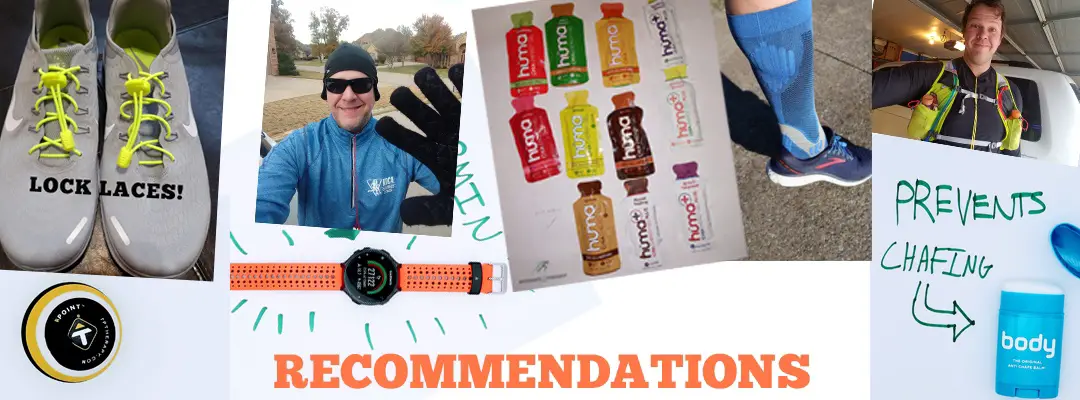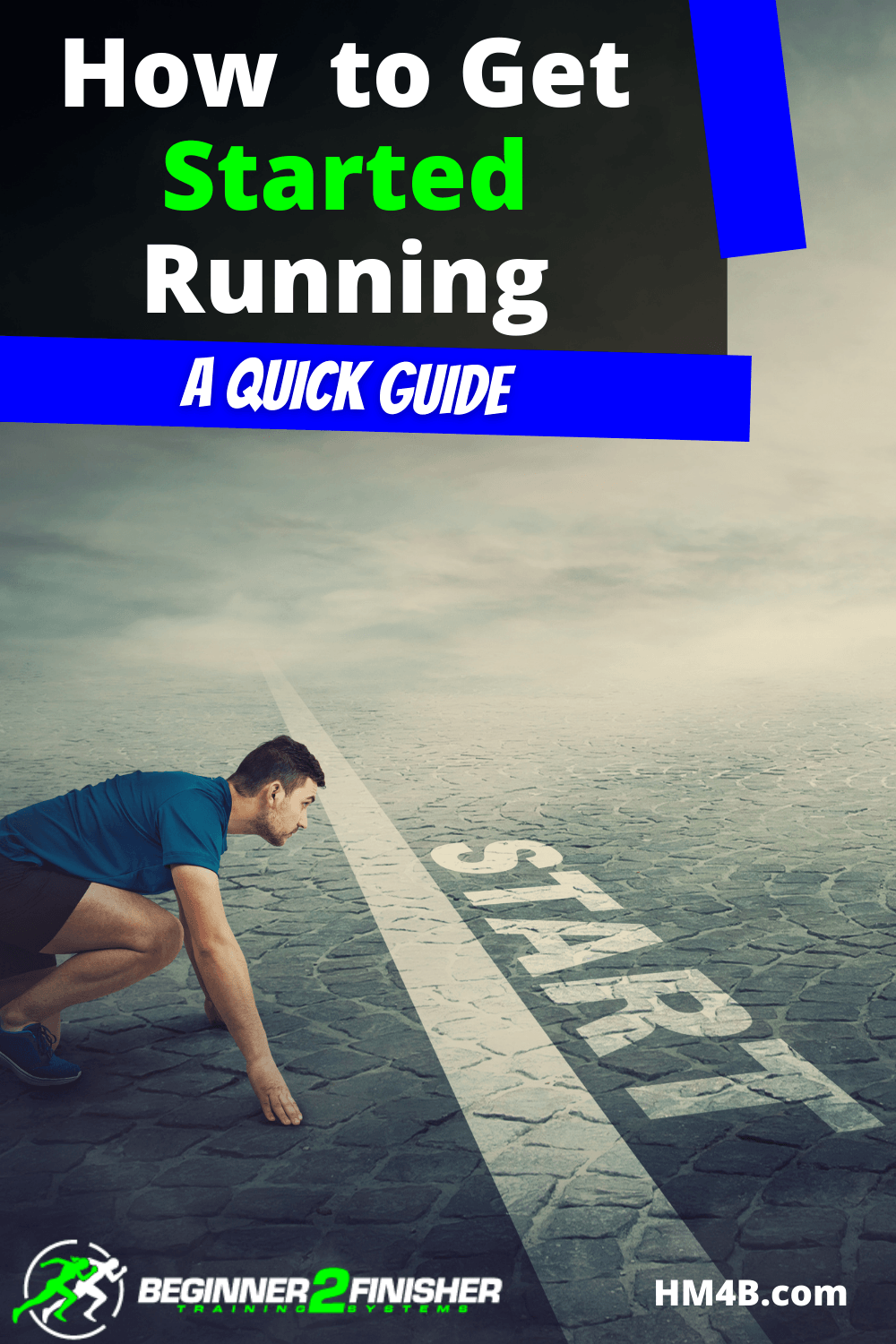Many of us today are looking for ways to increase our fitness, and running is an ever-popular exercise that requires little to no equipment, can be done in groups or alone, and is great for your legs and breathing.
However, getting going can be a bit daunting, so that’s why we’ve worked on some tips that will answer the question of how to get started running as definitively and helpfully as possible.
Start Off Slow
Whenever you start a new sport, start slowly. This is key to easing your muscles into the new experience and also getting yourself mentally prepared. If you try to launch into running miles and make the process too hard for yourself, you will quickly experience burnout.
It’s much better to set realistic goals and motivate yourself by a) making running feel good and b) giving yourself the euphoria boost of achieving your targets.
Starting too fast can also lead to injury, which takes us to our next point.
Related: Check out my YouTube Video on How Often Should New Runners Run
Make Sure You Are Medically Fit To Start Running
If you have any concerns about your health – because of preexisting conditions or injuries – or you’re just nervous, schedule an appointment with your doctor to check that you are fit to start running.
Discuss targets and anything you should watch out for in terms of your health, and make sure your doctor is satisfied with your plan before you put it into action.
Breathing Economy Is Key For Aerobic Exercise. Shoot for 2:2 or 3:3
You should be able to breathe comfortably while you’re running, especially if you want to go for sustained periods of exercise. If you can’t easily say a full sentence, you are pushing too hard and may want to slow down a bit.
Work on controlling your breathing; this will help you sustain your run for much longer and make it more comfortable. This may be hard when you first start running but work toward it as a goal.
You should reach a point where you can do 2:2 or even 3:3 breathing. The former involves breathing in for two counts and then breathing out for two counts (the latter three for each). This controlled breathing will help you to use your diaphragm and increase your oxygen intake.
Related: Why New Runners Quit – Avoid These 15 Mistakes At All Costs!
Make Sure You Warm-Up
Warming up is a crucial part of any exercise, even if you’re already quite fit. You should spend at least five minutes before a run preparing your body. Lift your knees to your chest, march on the spot, walk quickly, or head briskly up and downstairs a few times.
This will prepare your muscles for exercise and reduce the risk of injury later.
Dynamic stretches (post includes 5 dynamic stretches you can perform) should be performed after warming up for 5-10 minutes and before your actual run.
Perform Foam Rolling On Tight Muscles Such As Calves (SMR)
You can use a foam roller on your muscles both before and after exercise. It will help to ease out tight muscles and loosen them, both as a preparation and a warm-up.
Getting rid of the tension can make you run more comfortably and improve your muscles’ ability to function properly.
Buy A Decent Pair Of Shoes
Good shoes are crucial to a good run and will help to protect you from injury. Choose ones that fill well and don’t just go for the cheapest option.
The first thing to consider is cushioning and support. Whether you’re doing long or short runs, you want your shoes to fit your feet and support them well, reducing the impact on each part of your foot and leg.
Think about the terrain and choose shoes that are appropriate for your area. If you’re going to jog around the block, you’ll want different shoes if you’re going to run a hiking trail. Look for a good grip too, reducing the chance of falls.
Dress Appropriately For The Climate
Think about the weather outside and choose your clothes carefully. In spring and summer, you will want cool, loose clothing that wicks moisture and breathes well – that’s fairly straightforward.
In winter and fall, it’s a bit trickier; you’ll be cold when you set out, but hot by the time you finish the run. Try to layer up and make sure you’re wearing clothes that you can strip off easily as you get warm. Moisture-wicking fabric will still be important.
If you’re going to run in the rain, think about a headband or cap to keep the rain out of your eyes. Choose darker colors for wet runs, as light colors can easily become transparent.
For cold-weather runs, choose a hat for an easily removable layer of warmth, and gloves to keep your fingers warm.
Pay Attention To Your Running Form
How do you look when you run? Is your head down? Are your shoulders slumped?
Try to straighten your back up with a slight forward tilt, as a rounded back will compress your chest and hamper your breathing. Your shoulders ought to be level, but relaxed, not rigid, and you should be looking forward, not staring at your feet. Tension is the enemy and it drains much-needed energy out of you.
Try not to lean too far forward or backward, even when you’re tired; keep your body upright.
For the ABCs of running form check out: How To Run With Proper Form
How Should A Beginner Start Running?
How you should start running depends a bit on your current fitness levels. You need to set yourself targets with these in mind.
If you already hit the gym a few times a week, you will be able to sustain a long run, but you should still go easy on your muscles and don’t expect too much too fast. If your runs are too easy, you can increase the difficulty later.
Start running by incorporating it into your workout regime once or twice a week, and see how it goes. If you enjoy the runs, you can increase the frequency.
If you are a real beginner and not in shape, consider some of the steps in the next point to get yourself started.
How Can I Teach Myself To Run?
Start by walking more often. Work on your posture and your breathing, controlling each breath and making sure you’re opening up your diaphragm and using your belly to breathe.
Once walking on the flat has become easy, consider taking up hiking; this is a good way to increase the difficulty and ease yourself into running. You can also pick up other sports to increase your fitness before you start trying to run.
Running if you are carrying a lot of weight can lead to injury, as you will be impacting your joints more heavily with each step. If you are not in shape, this is dangerous and won’t improve your fitness.
Check out these three articles on overweight running:
- Is It OK To Run If You’re Overweight?
- How To Start Running When Overweight (Plus Size Runner Website)
- Top Tips When You are Overweight and Running to Lose Weight (Plus Size Runner Website)
Simply Start Running
If you feel ready, begin with a gentle jog around the block. Set an easy target and don’t watch the clock; just finish the jog, even if it takes a long time. Once you have done this a few times, you can start to increase the speed a little, and then begin to incorporate timing into it.
Some people will benefit from having a big plan and schedule and targets worked out, but many people will find running less daunting if they simply start.
Don’t Forget Cross-Training
Running is great exercise, but you need to pair it with other exercises too, especially low-impact ones. Try yoga or Pilates, and focus on muscles that running doesn’t exercise as much, such as the glutes and hips.
Related: Best Cross-Training Stationary Bikes For Runners
Don’t Forget Strength Training and Stabilization
When I say strength training, I’m not talking about loading up the barbells with massive weight. Massive muscular building usually settles in the realm of using maximum strength and hypertrophy training (I’m also a NASM CPT).
To get a good strength workout out, all you need is about 30-45 minutes. These exercises can be performed with your body weight, kettlebells, or dumbbells.
I use a combination of all 3. Some of the exercises that I perform are:
- Curtsy lunges with kettlebell weight held out front in center
- Sumo squats with kettlebell chin row on the upward movement
- Prisoner squats with dumbbells (check out my recommendations for adjustable dumbbells here)
- Standing supermans
- Double Arm Swing with Kettlebell
- Single Arm Swing with Kettlebell
- Jump rope 100 times
- Kettlebell thread the needle
- 30 Pushups
- Situps
- V-Ups
- Windshield Wipers
- Side Planks
- Flat Arm Planks
- Shoulder Shrugs with dumbbells
- Lateral Arm Lift with dumbbells
These are some of the key areas I try to work out. There are many exercises you can choose from, so there isn’t really a right and wrong exercise as long as your mainly focused on the core muscles. Here are some other exercises I personally perform for my core strength training.
Related: Best Stabilization and Balance Exercises For Runners
Speedwork Is Not Necessary For Beginners
You don’t need to focus on your speed when you’re starting out, and doing so can increase your chance of injury as your muscles aren’t prepared for it. You don’t need to be doing ladders, strides, tempo runs, fartleks, etc., to begin your running routine.
It’s better to build up slowly and enjoy the exercise; this will lead to sustained running and a reduced chance of injury.
Rest And Recovery Help Rebuild Your Muscles
It’s always important to build breaks into your exercise routine to let the muscles recover. You shouldn’t run every day but should take break days at least once a week (even for experienced runners). This lets muscles recover and also gives you a mental break, increasing your overall resilience.
Use Walk/Run Intervals
Walking and running intervals are a great way to keep yourself on track. A walking break allows you to catch your breath and is necessary for beginning runners.
However, experienced runners can also benefit from the technique. Alternating between walking and running is a great way to manage longer runs.
A walk to run ratio can divide up a challenge into blocks, giving you more mental energy and enthusiasm, and more control and structure for a run. It’s thought that taking walk breaks can help even highly experienced runners improve their times and get a better workout.
A simple walk/run strategy to get started with is to run 30 seconds walk 4:30 and repeat this about 4 times for a total duration of 20 minutes. This is a great way to approach running by minimizing your run time.
Related: Check out my YouTube Video on How To Set Run-Walk Intervals With Your Garmin 235
Track Your Progress – Running Log
Keeping a progress log is crucial for motivation. Being able to see where you started, how many days you have run, and how far you have come is crucial to sustaining your enthusiasm for running. It will also help you identify when it’s time to increase the challenge.
I use a running log which you can check out on my recommendations page.
Run With A Group Or Experienced Running Buddy
Running with a group might feel daunting to a beginner, but it’s a great way to get into the sport and actually forget what you’re doing, bringing a social side to the exercise. Don’t stress about keeping up; remember that it’s not a competition, but a goal to improve yourself. You can stop when you need to.
You can also run with just one experienced friend. They will help to gently push you, and will also help you know when it’s time to take a break and slow down.
Related: 22 Running Tips For Absolute Beginners!
How To Start Running At 50
Running after age 50 is a great way to keep your fitness up, but you should take precautions.
Ease into it slowly, and talk to your doctor about potential risks first. Unless you have health problems, you aren’t at a significantly higher risk of injury than a young runner, but you should think about carrying contact information just in case.
You may have a slightly higher risk of breaking a bone if you fall, and you may struggle to build up muscle as fast as a young runner. However, as long as you have discussed the risks with your doctor and you ease into running gently, you should be fine to start running at 50 – and indeed, fitter for it in the long run!
Race – When You’re Ready – Not Before
A race doesn’t have to be competitive, but it’s in our human nature to try to do the best we can at what we do. Before you get ready to race check out this post:
Racecourse Etiquette – 15 Things Not To Do!
Beginner Runner FAQ
I’ve put together a short FAQ for beginner runners. It’s short and sweet. Check it out here:
Beginner’s Guide To Running FAQ
Conclusion
Running is a great way for anyone to increase their fitness levels, and if you’re keen to get into running, the most important thing to do is take it slowly and don’t burn yourself out or injure yourself.
Work on good posture and controlled breathing, get some good shoes and comfortable clothes, and set yourself achievable targets; running will soon be an enjoyable part of your workout routine!
| Help support me and subscribe to my YouTube channel. YouTube video - 30 ways to make your runs less painful! Coach Scott's Credentials:
|
To sign up for a FREE half marathon training schedule, log sheet, and pace predictor CLICK HERE.

Recommended gear for runners
Connect with me:
| facebook.com/BeginnerToFinisher/ |
References
https://www.runnersworld.com/beginner/a20866623/what-over-50-runners-need-to-know-before-they-start/
https://www.verywellfit.com/should-i-run-every-day-2911130
https://www.active.com/running/articles/4-speed-workouts-for-beginners
https://www.runnersworld.com/training/a20827090/16-cross-training-activities-to-try/


2 thoughts on “How To Get Started Running – A Beginner’s Guide”